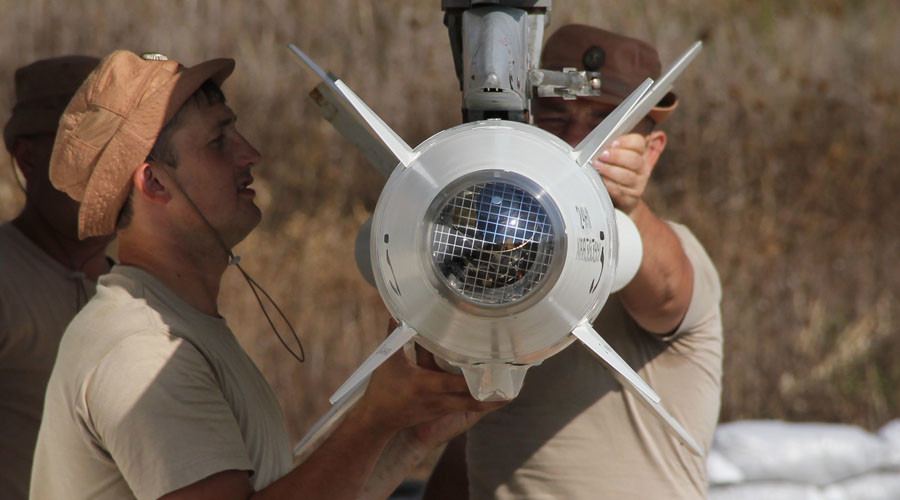
2712070 10/04/2015 Russian servicemen attach a Kh-25 high-precision missile to a Su-24 aircraft at the Khmeimim airbase in Syria. Dmitriy Vinogradov/RIA Novosti
On October 4, a new wave of Russian airstrikes hit a stronghold of terrorist groups in the northwestern Syrian region of Greater Idlib.
The airstrikes targeted the town of Kobane and a number of nearby hilltops in the northern countryside of Lattakia. No casualties were reported as a result of the airstrikes.
Kabani is a stronghold of al-Qaeda-affiliated Hay’at Tahrir al-Sham (HTS) and several other terrorist group, including the Turkistan Islamic Party and Ajnad al-Kavkaz. Over the last few years, terrorists launched dozens of attacks on the Syrian coast from the town and its surroundings.
The Russian airstrikes came following a series of intensive Syrian artillery strikes that targeted the main supply line of Kabani.
The recent strikes on Kabani and its supply line were likely a warning by the Russian Aerospace Forces and the Syrian Arab Army to HTS and its allies, who may be planning to launch a new attack from the town.
HTS and its allies violated the ceasefire in Greater Idlib, which was brokered by Russia and Turkey more than two years ago, on countless occasions in the last few weeks. The terrorists paid a heavy price for these violations.
On September 30, at least 13 terrorists of HTS were killed when Russian warplanes bombarded underground headquarters of the terrorist group near the towns of Mseibin and Ruweiha in the southern Idlib countryside. Two of the slain terrorists were commanders of the terrorist group, according to the Russian Ministry of Defense, who identified them as “Abu Usuf al-Shami” and Khaled “Abu Omar” al-Usuf.
Despite all recent violations by HTS and its allies, the ceasefire in Greater Idlib will not likely collapse any time soon. The situation in the region remains stable enough to prevent a full-blown confrontation between the warring parties.






Is it really wise to escalate in Syria while Ukraine war is growing bigger?